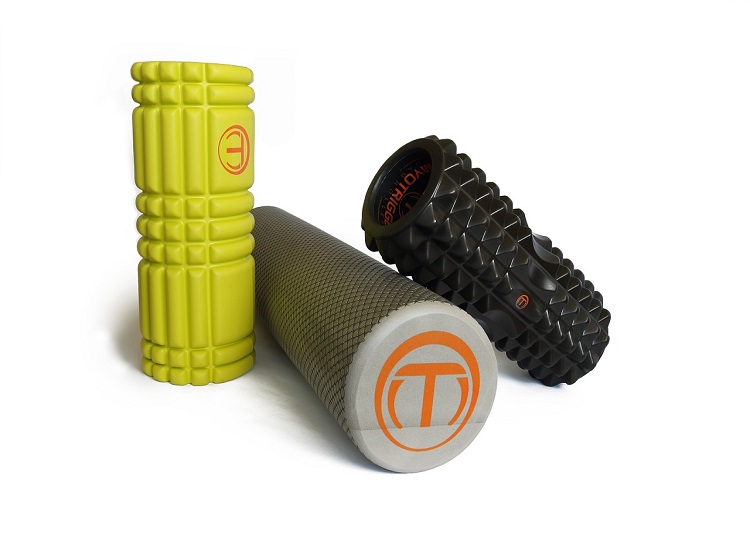Foam Rolling to Reduce Pain

Foam rollers are an awesome and simple tool that can be used to help reduce pain in your muscles and joints. They are easy to use and transport so you can work on your pain management at home, the gym, or even at the office!
There are a variety of types of foam rollers. They usually vary in length and density. Shorter foam rollers are used to release muscles and longer foam rollers are typically used for more mobility and stability exercises. Density can range from very soft foam to very hard foam. If you are new to using a foam roller I would start with soft foam and then you can progress to the harder foam. Some foam rollers have ridges on them. I usually recommend foam rollers without ridges so that you can better control where the pressure is focused.
The purpose of using a foam roller is for soft tissue release, spine mobility, or performing a stability exercise.
Soft tissue (muscle) release – The foam roller can help with soft tissue release by rolling it over the tight muscle area. You want to roll parallel with the direction of the muscle fibers to be most effective in releasing the tissue. For example – rolling your quadriceps – the quadriceps fibers run in the sagittal plane (head to toe) – therefore roll the foam roller from the top of the quad (near the hIp) to the bottom of the quad (near the knee). See picture below.

Spine mobility – foam rollers can be used to mobilize your joints in your spine. For example – your thoracic spine (middle back) tends to round in a certain direction when people sit a lot throughout the day. You can use your foam roller to help mobilize your thoracic spine in the opposite direction. See the picture below.

Stability exercise – foam rollers are great to use for stability and core exercises. Simply use the foam roller as an unstable surface to lie on while doing core exercises. The addition of the unstable surface will make your core exercise more challenging.
Parameters for using the foam roller:
Pain relief – you should roll over top of pain and roll until the pain has significantly decreased up to 10 minutes in the same area.
Flexibility – you should roll overtop of the area for 2-5 minutes.
Spine mobility – you should go into the position and hold for 30 to 60 seconds. Typically for a thoracic spine mobilization, I will tell my patients to start in between the shoulder blades, hold this for 30-60 seconds, then gradually go lower and hold about 5 more spots until you reach the lumbar spine.
Foam rolling can be painful, much like a deep tissue massage, use pain as your guide for how hard you press. You should foam roll at different times throughout the day or before/after exercise. Anyone can use a foam roller so go out and try one! Happy foam rolling!

